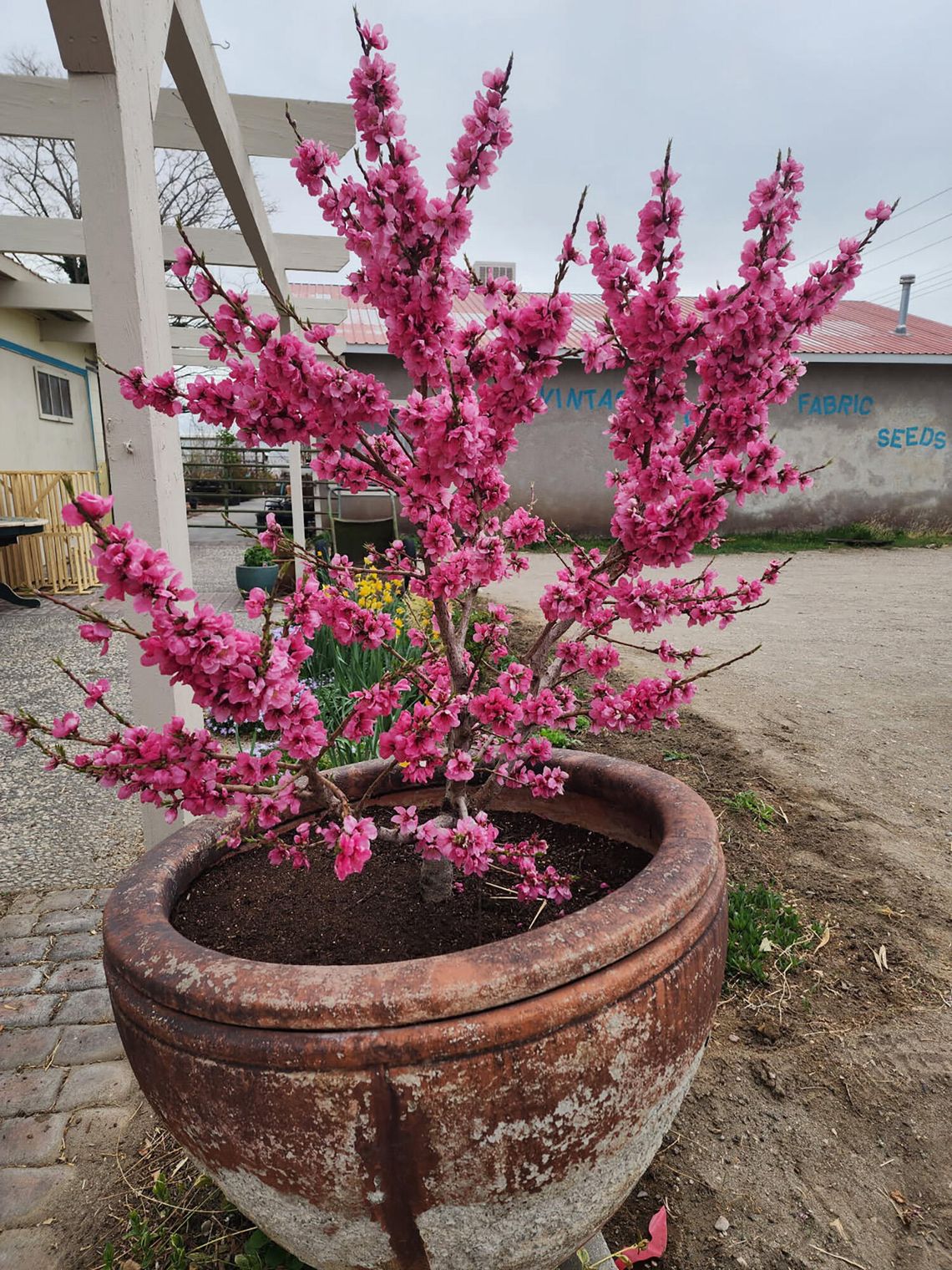As the weather warms and trees begin to bud across the valley, Workman’s Farm and Nursery is offering a wide variety of flowering trees suited for both ornamental beauty and homegrown fruit. From colorful crabapples to compact peaches and graceful weeping cherries, these trees are well-adapted to Lahontan Valley conditions and can thrive with the right care.
Weeping cherry trees, one of the nursery’s most striking selections, feature delicate cascading blossoms that make them a favorite for early spring planting. These trees are grafted, with a non-weeping rootstock (Prunus avium) supporting the distinctive top growth. When planted in full sun and well-drained soil, they offer an elegant addition to any landscape and require minimal maintenance beyond occasional pruning and mulching.
Plant your weeping cherry in sunny, well-drained soil. Keep the soil evenly moist but not overwatered. Allow for plenty of airflow, and do not plant too close to other trees and shrubs. Weeping cherry trees perform best in ground that is at least moderately rich. Feed it annually in early spring. As with all trees, Workman's Farm and Nursery prefers a more organic approach to fertilizing by using mulch, such as dried lawn clippings, dried leaves, or dried bark.
Weeping cherries need little other pruning unless you find a dead branch. Any shoots from the rootstock are undesirable - prune off immediately; your plant is diverting valuable energy from the rest of the tree into these useless, unattractive shoots. However, if disease becomes an issue, prune affected branches out or selectively prune branches after flowering to increase airflow to help combat fungal disease.
Other flowering miniature trees are flowering peaches, which will produce fruit. There are several Cling Peach or stone-free varieties with different skin types and meat colors. These trees grow between six and eight feet tall, making them significantly smaller than their standard counterparts and easier to cover in early spring when they are most vulnerable to Mother Nature. Despite their compact size, they still produce fruit that rivals the flavor and quality of peaches from larger trees.
Crabapple trees are another stunning ornamental flowering tree that does well in the Lahontan Valley, boasting spectacular shades of pink, white, cream, purple, orange, and red. They produce small fruits called crabapples that generally have a tart taste. The colorful miniature apples often stay on the tree long after the leaves have dropped in the fall. In addition, crabapple, with its small-sized fruit, makes them popular in floral arrangements and crafting. The small fruit comes in various colors, from light yellow to orange to red, with different types of leaves, fruit colors, sizes, and growth forms. They tolerate a wide range of soil conditions if they are well-drained. Beyond ornamental value, look for disease-resistant strains when purchasing your crabapple trees.
Dwarf trees include crabapple, peach, and citrus, with many bearing fruits sooner than traditional trees. These miniature trees come with a variety of planting options, fitting seamlessly into tight spots. Additionally, harvesting fruits from shorter trees is also easier. A small, flowering variety may be the perfect tree for your yard. Stop by Workman's Farm and Nursery to see the many trees in stock at 4990 Reno Highway, or give them a call at 775-867-3716









Comment
Comments